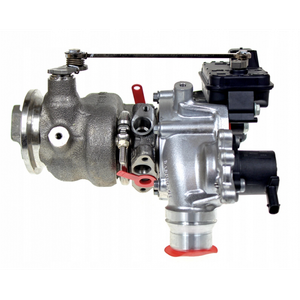A turbocharger is a device that is used in internal combustion engines in order to increase engine power by increasing the air supply to the cylinders.
Introduction.
A turbocharger is a device that is used in internal combustion engines in order to increase engine power by increasing the air supply to the cylinders. The basis of the principle of operation of a turbocharger can be considered the use of energy contained in exhaust gases to drive a compressor, which in turn pumps more air into the intake manifold. As a result, more oxygen enters the cylinders, which allows the engine to burn more fuel and produce more power.
Advantages and disadvantages of turbochargers.
The turbocharger has a number of advantages and disadvantages. Dignities:
- Power boost. The turbocharger effectively increases engine power, which is especially useful on vehicles with a small engine capacity or in case of a need for more power to overtake or accelerate.
- Improved fuel efficiency. The turbocharger promotes better fuel combustion, which can lead to an increase in the efficiency of the engine.
Disadvantages:
- Injection delay. The turbocharger has a discharge delay, known as turbo lag, which manifests itself in the time it takes to gain full power after pressing the gas pedal.
- Additional costs and maintenance difficulties. The turbocharger requires regular maintenance, including oil and filter changes, and may also require repair or replacement in the event of a breakdown.
It should be noted that these advantages and disadvantages may differ depending on the specific operating conditions and proper maintenance of the turbocharger.
Replacing the turbocharger.
Turbocharger replacement is the process of replacing a faulty or outdated turbocharger with a new one. Here are some steps that may be necessary when replacing a turbocharger:
- Dismantling of the old turbocharger. To do this, you may need to remove some engine components, such as the exhaust manifold or intake manifold. Then the old turbocharger is removed from the engine.
- Surface cleaning. After removing the old turbocharger, it is necessary to clean the surface on the engine to remove any remaining oil or other contaminants. A special solvent or washing agent is used for this purpose.
- Installation of a new turbocharger: The new turbocharger is installed on the engine and properly secured. Then all the removed engine elements are returned to their place.
- Verification and testing. After installing a new turbocharger, it is necessary to check its operation and test the engine.
It is important to note that replacing a turbocharger is a complex process that is best carried out with the help of a professional car mechanic in a turbo charger uk.
